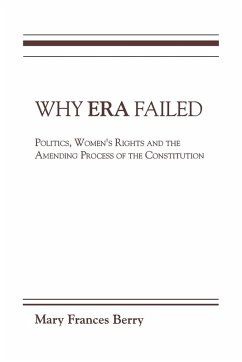
Failed State
A New (Old) Definition
Versandkostenfrei!
Versandfertig in über 4 Wochen
15,99 €
inkl. MwSt.

PAYBACK Punkte
8 °P sammeln!
This monograph posits that the state must structure the delivery of public goods in a sequential and hierarchical basis with safety and security and rule of law providing a foundation upon which the state builds delivery of all other public goods prior to any discussion of higher level needs like participation and human rights. In support of this premise, this monograph defines a failed state as a state which cannot claim a monopoly on the legitimate use of physical force within a given territory. This research explores various state ranking systems, which purport to measure state delivery of ...
This monograph posits that the state must structure the delivery of public goods in a sequential and hierarchical basis with safety and security and rule of law providing a foundation upon which the state builds delivery of all other public goods prior to any discussion of higher level needs like participation and human rights. In support of this premise, this monograph defines a failed state as a state which cannot claim a monopoly on the legitimate use of physical force within a given territory. This research explores various state ranking systems, which purport to measure state delivery of public goods. These measurements are aggregated and interpreted to assess state fragility. These ranking systems carry a bias toward higher end development, like the development of human rights, rather than focusing on foundational aspects of state development, like safety, security, and rule of law. Mexico illustrates this monograph's thesis by showing that performance in other categories of governance cannot offset a lack safety and security for the citizens of Mexico. The implication of this premature focus on participation and human rights is the creation of weak and illegitimate state institutions since safety and security did not form the foundation of the state's contract. This work has been selected by scholars as being culturally important, and is part of the knowledge base of civilization as we know it. This work was reproduced from the original artifact, and remains as true to the original work as possible. Therefore, you will see the original copyright references, library stamps (as most of these works have been housed in our most important libraries around the world), and other notations in the work. This work is in the public domain in the United States of America, and possibly other nations. Within the United States, you may freely copy and distribute this work, as no entity (individual or corporate) has a copyright on the body of the work. As a reproduction of a historical artifact, this work may contain missing or blurred pages, poor pictures, errant marks, etc. Scholars believe, and we concur, that this work is important enough to be preserved, reproduced, and made generally available to the public. We appreciate your support of the preservation process, and thank you for being an important part of keeping this knowledge alive and relevant.












